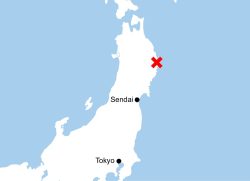14:00 JST, August 28, 2024
Does China intend to threaten Japan not only from the sea but also from the air? This infringement on Japan’s sovereignty is unacceptable. The government needs to reestablish a system to protect its territory and territorial waters.
A Chinese Y-9 military reconnaissance plane violated Japan’s territorial airspace off the Danjo Islands in Nagasaki Prefecture. Air Self-Defense Force fighter jets scrambled and repeatedly warned the Y-9 plane that it was coming too close to Japan’s airspace. But the plane reportedly ignored the warnings and entered the airspace.
There have been cases in the past in which a Chinese government aircraft and a drone violated Japan’s airspace around the Senkaku Islands, but this is the first time a military aircraft has made an intrusion. What’s more, it did so near one of the main Japanese islands. China can be said to have stepped up the level of provocation.
It is only natural that the Japanese government protested to China. The government must demand an explanation of the circumstances that led to the violation of Japan’s airspace, take strict measures accordingly, and strongly urge China to prevent a recurrence of a similar incident.
The Chinese military aircraft violated Japan’s airspace for two minutes. However, it continued circling in the area for more than two hours and received warnings from the SDF aircraft. It is difficult to believe that the aircraft violated Japan’s airspace by mistake.
Some believe that China was trying to test the capabilities of the ASDF’s fighter jets and air surveillance radar systems, or that it sought to assess Japan’s defense system amid the “political vacuum” created by Prime Minister Fumio Kishida’s announcement that he would not seek re-election as his party’s president.
In any case, the provocation is a dangerous one.
Generally speaking, airspace is more prone to military conflict than territorial waters.
In territorial waters, vessels of other nations are granted the right of innocent passage. However, there is no such provision in international law for airspace, and if an aircraft violates another country’s airspace, it immediately constitutes an infringement on the sovereignty of that country — a situation that considerably heightens the level of danger.
Chinese government vessels have increasingly been navigating in the contiguous zone around the Senkaku area, and now China Coast Guard ships frequently enter Japan’s territorial waters as well. It is common practice for China to unilaterally assert its supposed rights and interests in an area, and attempt to gain effective control of it by building up a series of faits accomplis.
The Self-Defense Forces should strengthen their vigilance and surveillance system against Chinese aircraft, through such measures as diligently operating airborne warning and control systems (AWACS) that can detect distant flying objects in the vicinity of the Nansei Islands.
In the South China Sea, Philippine vessels have been repeatedly rammed by vessels of the China Coast Guard, suffering such damage as holes in the hull of a ship. However, the Chinese government claims that the Philippines intentionally caused the collisions, and the two sides have continued to trade barbs.
China may behave with increasing recklessness in the East China Sea as well. It is important that Japan, the United States, the Philippines and other regions and nations cooperate to enhance their response capabilities.
(From The Yomiuri Shimbun, Aug. 28, 2024)
"Editorial & Columns" POPULAR ARTICLE
-

Artificial Intelligence Expands Possibilities for Foreign Language Learners
-

Build Intellectual, Physical Strength, As Well As Communicative Power / Japan Should Move from Beneficiary to Shaper of World Order
-

Global Economy in Turmoil: Prevent Free Trade System from Going Adrift / Risks to Financial Markets Must Be Heeded
-

Japan-China Strain Set to Persist as Beijing Officials Self-Interestedly Bash Tokyo; Takaichi Unlikely to Back Down
-

French and German Ambassadors to Japan Call for Democracies to Unite in Defense against Russian Disinformation
JN ACCESS RANKING
-

As Chinese Tourists Shun Japan, Hotels and Stores Suffer
-

Osaka-Kansai Expo’s Economic Impact Estimated at ¥3.6 Trillion, Takes Actual Visitor Numbers into Account
-

Japan Govt Adopts Measures to Curb Mega Solar Power Plant Projects Amid Environmental Concerns
-

BOJ Gov. Ueda: Highly Likely Mechanism for Rising Wages, Prices Will Be Maintained
-

Economic Security Panels Debate Supply Chains, Rare Earths; Participants Emphasize Importance of Cooperation Among Allies




















